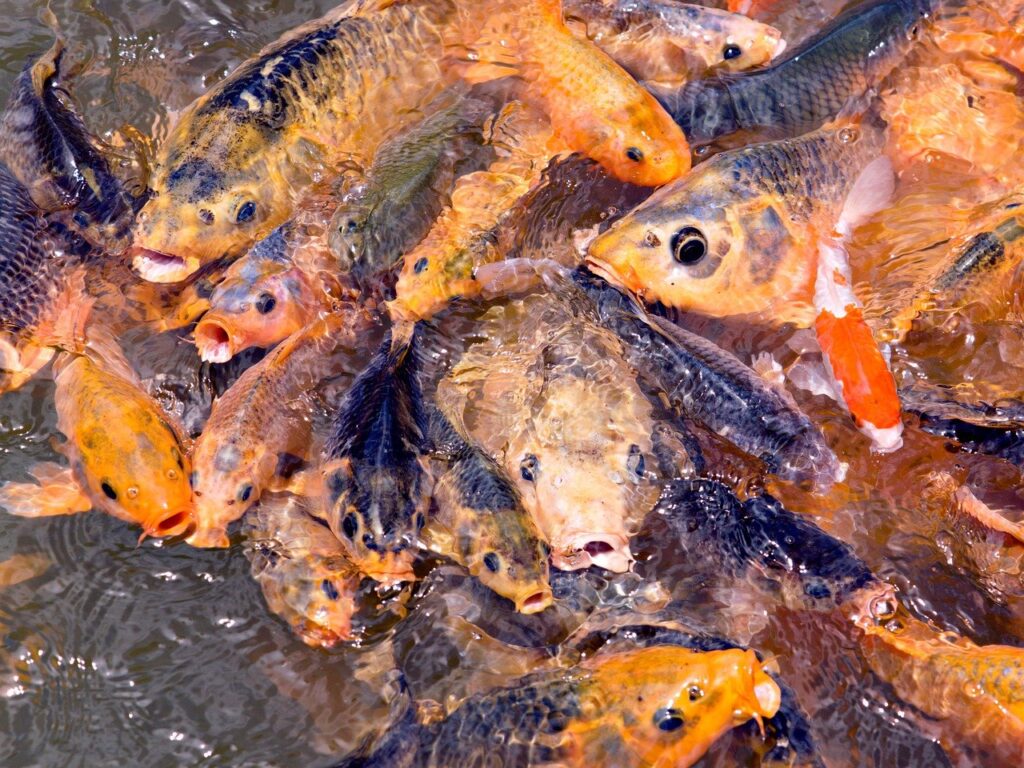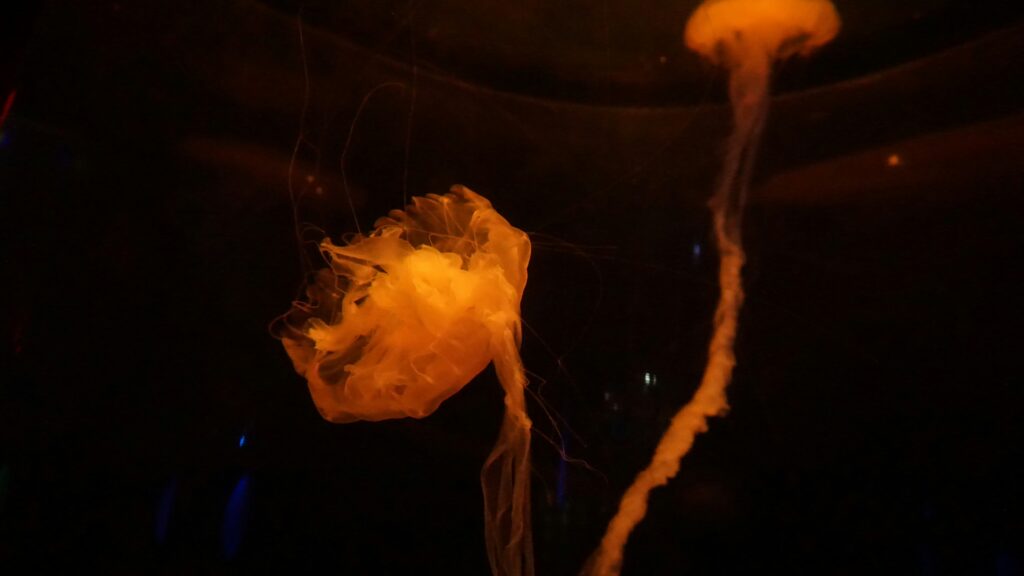Have you ever looked at a fish and wondered how do fish grow and develop? It’s fascinating to think about how these creatures transform from tiny eggs into the vibrant, diverse species swimming in our oceans, rivers, and lakes. I’ll share insights into the growth and development of fish, covering everything from their reproductive stages to the factors that influence their growth.
Reproductive Stages
Fish begin their life cycle from eggs, which are laid and fertilized usually in water. The reproductive processes can vary widely among different species, affecting their growth and development. For some species, such as salmon, the journey begins when they migrate upstream to spawn. Others, like clownfish, are born in coral reefs. Understanding these reproductive stages is key to grasping how fish develop.
Egg Stage
The egg stage is the very first stage in a fish’s life. When a female fish lays eggs, they can contain yolk, which provides essential nutrients for the developing embryo. The size and number of eggs vary depending on the species. For instance, a single cod can lay millions of eggs, while a larger fish, like the whale shark, has fewer but larger eggs.
Fertilization
Once the female lays her eggs, fertilization usually occurs shortly after by male fish releasing sperm, also known as milt, into the water. This process can happen externally or internally depending on the species. External fertilization is more common in freshwater and marine species. In contrast, internal fertilization is often seen in livebearers like guppies, which give birth to live young rather than laying eggs.
Hatching
After fertilization, the egg develops into an embryo. The time it takes for the eggs to hatch can range from a few days to several weeks, based on environmental conditions like water temperature and oxygen levels. Hatching marks the transition from the egg stage to the larval stage.
Larval Stage
The larval stage is incredibly critical for the fish’s survival. During this time, they undergo significant transformations as they begin to adapt to their environment.
Yolk Sac Absorption
Initially, when larvae hatch, they rely on their yolk sac for nutrition. This sac is a vital energy source that provides the necessary nutrients to help them survive until they find food. As they develop and the yolk sac is absorbed, they become ready to feed on live prey, such as tiny zooplankton.
Feeding and Growth
As larvae transition to free-swimming fish, they start to actively seek food. The diet will vary based on the species. Some might start with small crustaceans and plankton, while others may consume algae or other organic materials. It’s essential at this stage to find the right food for proper development.
| Fish Species | Primary Food Source | Growth Rate |
|---|---|---|
| Goldfish | Flakes, pellets | Moderate |
| Trout | Insects, small fish | Fast |
| Catfish | Plant material, detritus | Slow |
The table above summarizes the feeding habits and growth rates of varied fish species. It highlights how diet can significantly influence growth potential.
Metamorphosis
During the larval stage, fish go through metamorphosis, a process of physical development that allows them to adapt to their environment. Their bodies will change in shape and size. For instance, many freshwater fish will gradually develop their distinctive fins and scales during this phase. This transformation is crucial in preparing them for life outside of their initial habitats, whether it be a coral reef, river, or pond.

Juvenile Stage
Once a fish completes its larval stage, it enters the juvenile stage, which is often the most physically dramatic phase of development. Fish at this stage are generally more independent and mobile.
Physical Development
During the juvenile phase, multiple body features develop. Fish undergo changes such as the elongation of their bodies, the development of adult coloration, and the growth of fins and scales. These physical changes are vital for their long-term survival as they become more active predators or grazers.
Social Structures
Juvenile fish often begin to interact with others of their kind, resulting in the formation of schools or groups. This social behavior can significantly enhance their chances of survival, as being in a school provides safety against predators. Social interactions can also influence their growth rates; fish that are socialized may perform better than solitary individuals.
Adult Stage
Upon reaching the adult stage, fish are fully developed and ready to reproduce. This stage can last for many years, with some fish, like certain species of carp, living for several decades.
Maturity and Reproduction
The age of maturity varies between species. Some fish become sexually mature within just a year, while others may take several years. Maturity involves not only size but also physiological changes that prepare fish for reproduction. It’s a time when they develop characteristics that will attract mates, such as vibrant colors and specific behaviors.
Factors Influencing Growth
Multiple factors impact the growth and developmental success of fish throughout their lives, from environmental to biological influences.
Environmental Factors
- Temperature: Fish are ectothermic, meaning their body temperature is regulated by the surrounding environment. Warmer waters often lead to faster growth rates, while colder waters can slow development.
- Habitat: The availability of suitable habitats affects growth. For example, species that can access nutrient-rich areas often grow more quickly.
Biological Factors
- Genetics: The genetic makeup of a fish determines its potential growth rate and ultimate size. Some species may have inherent traits that enable them to grow larger or faster than others.
- Health and Diet: Overall health, influenced by diet and exposure to pathogens, plays a crucial role in growth. Well-nourished fish are typically more robust and develop into healthier adults.

Lifespan and Aging
Fish lifespans can vary significantly between species. Understanding the lifespan provides greater insight into the growth and development patterns of fish.
Lifespan Variations
Some small fish, like killifish, may only live a year or so, while larger species, like the sturgeon, can live for over a century! This variability can be attributed to factors like habitat, fishing pressures, and environmental stressors.
| Fish Species | Average Lifespan | Notes |
|---|---|---|
| Goldfish | 10-15 years | Domestic variety, hardy |
| Betta Fish | 2-5 years | Popular in aquariums |
| Tuna | 10-30 years | Subject to overfishing |
The table illustrates some of the average lifespans of commonly known fish species. Lifespan can provide important cues regarding a species’ growth rates and developmental stages across years.
Aging Techniques
Researchers often use various techniques to measure fish age, such as counting the rings on scales or otoliths (ear stones). These methods allow scientists to assess fish populations, growth rates over time, and how environmental changes affect longevity.

The Role of Habitat in Growth
As a fish grows, its habitat plays a crucial role in development and overall health. Different environments present unique challenges and opportunities for growth.
Freshwater vs. Marine Habitats
Freshwater fish typically develop in rivers, lakes, and streams, while marine fish thrive in oceans and seas. Each habitat has different nutrient availability, temperature ranges, and predation pressures, all of which can influence growth rates and developmental success.
- Nutrient Availability: In productive freshwater environments, fish might have abundant food sources, leading to faster growth. Conversely, nutrient-poor habitats may slow down development.
- Predation Risks: The presence of predators can affect growth. Fish in areas with high predation risk may grow more cautiously, remain hidden, and take more time to reach maturity compared to those in safe environments.
Conservation Implications
Understanding fish growth and development is critical for conservation efforts. Overfishing, pollution, and habitat destruction can profoundly affect fish populations.
By studying their life cycles, conservationists can implement measures that help protect various species and maintain healthy ecosystems. These efforts ultimately lead to sustainable fishing practices and the preservation of aquatic life for future generations.

Conclusion: How Do Fish Grow And Develop
I find it amazing how fish grow and develop throughout their lives, from tiny eggs to fully formed adults. Each stage in their life cycle plays a significant role in shaping who they become, and understanding this process provides valuable insight into their biology. The interactions between genetics, environment, and species-specific behaviors create a complex yet fascinating narrative of growth and survival.
As I reflect on the rich diversity of fish species, it’s clear that every aspect, from their reproductive methods to their habitat choices, plays a crucial role in their overall development. So the next time I watch a fish swim, I’ll appreciate the intricate journey of growth they’ve gone through to be where they are today.
